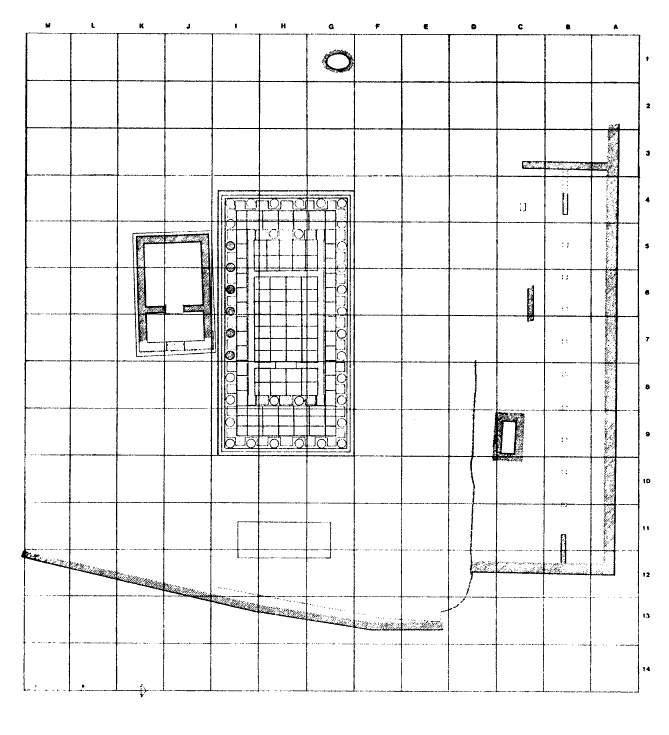The Sanctuary of Nemesis at Rhamnous
If you want to know how to add e.g. additional images, podcasts, etc., please see this page.
Rhamnous was an outlying deme of Athens on the northeast coast of Attica, near Marathon. It had its own urban centre, complete with theatre and gymnasium.
Archaeological Development
Two temples to Nemesis can be found at the site, constructed very close together, as well as a temple to Themis. Construction began on the larger structure at around 460-450 BC and was finished in 430-420.
Miles estimates that construction cost about 30 talents, a substantial but not outrageous sum. Costs were kept low by making the temple comparatively small and using local materials. The temple was not actually completed: the fluting on the columns is unfinished and the steps are not smoothed.
The temple shares a similar style (slender columns, continuous friezes) with three other temples: the Hephaesteum and the temple of Ares in Athens, and a temple at Sunium. This suggests that they were designed by the same architect.
The site underwent repairs in the Roman period and the temple was reconsecrated to Livia.
The temple and statue were destroyed in late antiquity but the ruins of the site remain in good condition.
Gods- Nemesis and Themis
Rhamnous is the most famous site of worship for Nemesis; in fact she was so closely associated with the site that she was sometimes called "Rhamnousia". The godess was a daughter of Night and had some negative conotations. Often mentioned in tragedy, Nemesis was the deity who goverenered human actions and the fortunes they resulted in. In particular she is famous for punishing hubris. The name 'Nemesis' derives from the Greek 'nemein'- to give what is due.
Pausianas tells us that a statue of her was constructed from a block of Parian marble left behind by the Persians after their defeat at Marathon. Whether the story is true or not, it is clear that the citizens of Rhamnous were fiercly devoted to their patron godess. It should come as no surprise that she is linked to the downfall of the Persians, given her penchant for bringing down the proud.
Also located at the sanctuary was a cult dedicated to Themis, the titan who represented order and divine law. Both deities have cthonic associations.
The goddesses are interconnected as when Themis is disregarded, divine retribution is brought by Nemesis.
Ritual Activity
Sacrifice-
add text here as appropriate. Note that "shift + enter" inserts a line break without any paragraph spacing.
Dedications-
add text here as appropriate
Other-
add text here as appropriate
Rules and Regulations
note here any rules and regulations relating to sanctuary use that have been found inscribed in and around the site.
Other Activities
An inscription from around 450 BC suggests that money could be borrowed from the site, suggesting parallels with the statue of Athena in the Parthenon. It reads:
'Of Nemesis's monies the total in the hands of the 200-drachma borrowers, 37,00 [drachmai]'[1]
Historical Significance
Strategic importance- guarded over Euripos and two small harbours that provided shelter off the East coast to southbound ships
During the Peloponnesian war Rhamnous provided safe passage for Athenian food supplies coming from Euboea after Spartans had taken the fort of Dekelia
Select Site Bibliography
Dinsmoor, W.B. (1950) The Architecture of Ancient Greece
Hard, R. (2004) The Routledge Handbook of Greek Mythology
Miles, M.M. (1989) Hesperia 58 ‘A Reconstruction of the Temple of Nemesis at Rhamnous’ p137-249
Spawforth, T. (2006) The Complete Greek Temples
Footnotes
1. Spawforth, p93
2- If you press "shift + enter" it will insert a line break without any paragraph spacing.
Location
55 km North-East of Athens.
Located on road between Marathon and Rhamnous


